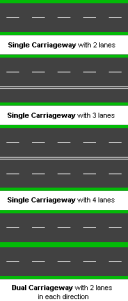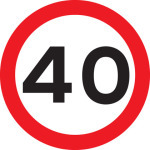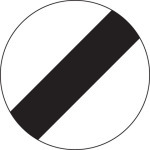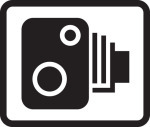Some Final Tidbits on Driving in the U.K.
I promised one more post of just a few follow-up items. Basically, a few things that are different from the U.S. that I think are interesting and what we’re not accustomed to in our daily lives.
National Speed Limit
That’s right, there are national speed limits. There are signs to indicate when the speed limit varies from the nationally set speeds, but you are supposed to know them because often a sign crops up to tell you the road is now the national speed limit with no further clarification. For a typical car or motorcycle, the national speed limit is as follows: (I also have a diagram Wikimedia was so kind as to have to illustrate the types of carriageways)
 Built-up areas (towns, etc) – 30mph
Built-up areas (towns, etc) – 30mph
Single Carriageways – 60mph
Dual Carriageways – 70mph
Motorways – 70mph
Now, just because the speed limit is 70 on a motorway doesn’t mean the police can’t pull you over for going the speed limit or even under. The speed limit is an “absolute maximum.” You are supposed to adjust your driving speed depending upon road conditions and weather. If you’re driving at motorway at 70mph in a heavy fog and rain, you could receive a ticket for what is essentially reckless driving.


 You also have to watch out for speed cameras, but here, you are supposed to be warned before a stationary camera. We have seen small vans with speed cameras on the roof driving along the motorways when we were on holiday last August. Even that automobile had a sign on it to say what it was.
You also have to watch out for speed cameras, but here, you are supposed to be warned before a stationary camera. We have seen small vans with speed cameras on the roof driving along the motorways when we were on holiday last August. Even that automobile had a sign on it to say what it was.
Crosswalks
There are quite a few different cross walks here and all use an animal name to differentiate them.
Zebra Crossing – These have the white stripes across the road and a flashing light/beacon on each side of the road. Some Zebra crossings have an “island” between car lanes. Each side of the road is taken separately since there is a place to wait until there is a break in traffic.
Pelican Crossing – Have a pedestrian controlled signal more like what we’re accustomed to. You press the button and wait for the figure to go from red to green. On a Pelican crossing there is a flashing green when the crossing signal is about to turn red.
Puffin Crossing – Same as the Pelican crossing but the figure doesn’t blink green before it changes to red.
Toucan Crossing – Is a light controlled like the two above except that it is shared with bicycles.
There are also equestrian crossings for horses as well.
Parking
Most parking is a pay and display set up around the U.K. When you find your parking space, you find a machine nearby, pay for the time you want, and display your receipt in the car windscreen/windshield. There is parallel parking on a lot of streets, but make sure you never park on a solid yellow line. People can unload, but not park. (Disabled can park in some of these areas however, so don’t be fooled by a single car parked on a yellow line.) If it’s a double yellow line or a red line, just don’t stop there. You’re better off[image error]
Driving code says not to parallel park facing oncoming traffic. I think the majority of the British violate this particular rule on a daily basis. People are parked in every which way on both sides of the road. It’s not something I prefer to do, but it is done.
Road Markings
The roads here look like someone scribbled all over them at times. It took me a while to get used to the amount of information on the road around here as well as what is on signs, etc. At the end of most roads is a “give way” upside-down triangle for example. Other marks include: cross walks, zigzag lines before cross walks and in other places. Driving code says not to park within these lines. A cross-hatched section in yellow means not to even stop in that area. Locally, we have one of these in front of the fire station and at an intersection near a roundabout. It makes congestion easier if people exiting the roundabout can turn where they need to quickly. In large roundabouts, the lanes are sometimes marked so the driver knows which lane to take in order to exit correctly. Speed limits are marked on the roads when the speed limit decreases. It’s a lot to take in at times!
I’m trying to think of anything else that can be useful, but I’m drawing a blank at this point. I feel like a lot of the signs are similar or able to be figured out when you’re in a certain situation. If you ever attempt to drive in England, I do hope these posts help!
Next up: Another trip to Bath!
Sources for images and information:
https://www.gov.uk/guidance/the-highway-code/traffic-signs
wikimedia commons
Licensing for street sign images:
https://www.nationalarchives.gov.uk/doc/open-government-licence/version/3/





